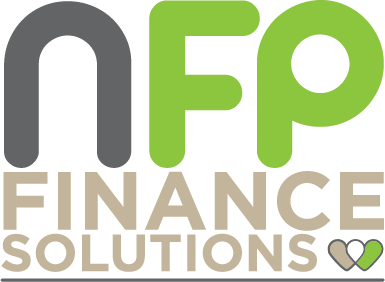Picture the scene – you’re the FD of a fast-changing charity and you’ve got some important messages you want to communicate about financial strategy and the budget to your colleagues on the SMT and the Board. You pull together a PowerPoint presentation, practice it and deliver it at the next SMT meeting. You finish and look round at the table. Two people are frowning, one is sending an email and the other is flicking through their papers for the next agenda item. After 30 seconds of silence one of the frowners asks a question which demonstrates they have not understood at all. The others are all still silent. You sigh, and scroll back to the beginning of your slide deck…
We’ve all been there. Like many complex things, clear messages about a charity’s finances can be difficult to deliver, and it can be hard for those of us who are expert in this area to understand why our colleagues find it so confusing, or even (dare we say it) dull. However, it’s vital that as charity finance professionals we get this right, and that we spend time not only on determining the messages we want to send but also planning how we are going to communicate them. To quote an article from the NonProfit Times on this subject, “Like many worthwhile lessons, financial information can have a value in inverse proportion to listeners’ interest in it.” It’s our job to overcome these hurdles and help our colleagues to understand that finance is not just all about the numbers – it’s about the information contained within them.
But how best to go about this when you have many demands on your time and you are communicating to an extremely diverse group of people? There are several models that I have seen used successfully, but the one I find gets most traction is the Who, What, When, Where, Why, How model. It’s simple – just 6 questions – but powerful. I think finance people also find it appealing because its jargon-free, easy to use and easy to remember. All it involves is to ask these six questions as you prepare any financial report, and to adapt your outputs accordingly. I’ve seen finance teams apply this to every piece of information they put out, and massively increase engagement and understanding from the wider organisation as a result.
Over the course of the next two blog posts let’s look at each question in a bit more detail and dig into what it is asking us to think about.
Who?
Let’s start with who is going to receive this beautiful financial report you have spent so long preparing. What do you know about them and how might that influence how you prepare your report in the first place?
Firstly, what are their interests and background and what’s their level of financial literacy? If it’s not very high, then what can the finance team do to improve that? Some ideas that I’ve seen work well are to deliver individual finance inductions for all new staff and trustees and to seek feedback on how useful they found it, and to hold regular finance surgeries where you run through the management reports and help people get to grips with them. Make sure you welcome questions in these sessions – nothing reduces participation more quickly than if you are clear that you expect a monologue rather than a dialogue.
Next, think about the general perspective of your audience. Are they optimistic or pessimistic types? Are they suspicious of numbers? How do they look at things and what barriers will that erect to them hearing the messages you are trying to deliver?
And finally (and very importantly), what are their key external influences now? What are the big picture things that are going on, and what is your audience likely to be worried about and focussed on? For example, if your charity has just approved a new, innovative fundraising strategy won’t the Board want to see clear information about how these new activities are performing? And given the current focus on safeguarding issues in the sector won’t they want to see how you spend money on that important activity? Be aware that the answers to this final question will change over time, and that means that the format of your reports might also need to change. Good financial information is not set in stone; its format flexes and changes with the needs of your charity and of your colleagues over time.
What?
For any financial report to be useful to its users the information within it must be relevant. The key question here is what information does the reader need to plan & control the financial resources for which they are accountable? But there are also lots of other things to consider as part of this question.
Almost before anything else your reports must be intelligible. Yes, financial messages can be complex, but I think as finance people we sometimes enjoy that a bit too much. Demand simplicity and make yourself clear.
Your reports must also be accurate, and this must consider both errors of commission and those of omission. Nothing will destroy your colleagues’ trust in you and your team more quickly than regular reissuing of reports, or corrections to the previous months’ numbers. But make sure you define what accurate means within your charity – reports must be accurate enough to be reliable but not so accurate that they take too long to produce. Identify the key data your readers need, specify the month end processes to deliver it, be clear about information status when your reports are issued, and stick to it.
Good financial reports are also dynamic; we work in a fast-changing world and adapting and responding to that will set a successful charity apart from a less impactful one. Your financial information must be easily updated as things change.
Think carefully about finding the balance of information in your reports. What do your readers really need to know? Too much information leads to data fatigue or getting diverted from strategic priorities; too little can lead to misinterpretation and distrust.
And finally, the information your reports provide must be clearly linked to organisational targets, strategic goals and ultimately impact. Within charities, finance is simply a tool not an outcome in itself; it is only meaningful when put alongside measures of what your charity has been able to achieve with the finances available to it.
When?
The important point here is that communication about finance should be ongoing, typically linked to key moments in your financial year such as budget setting and month end, and should support a culture of information sharing within your charity. Stepping up the communications when there is a crisis is too late – you need to invest time in talking about finance now and build a strong platform for more difficult messages that might come later, otherwise you will face high levels of suspicion and find it hard to get your message across. Regular reports such as month end management accounts need most of all to be timely; 3-5 working days post month end should be easily possible for almost every charity. You achieve this by setting a team culture that values timely reporting, gaining commitment from your finance colleagues and focusing in on only the key information (see more on this in What? above)
So that’s it for Part One of how to apply the Who, What, When, Where Why, How model of clear communication within your charity. Click here to read Part Two, covering the final three questions, including the most important question of all – Why are we communicating this information in the first place?
Have you found this post interesting? Then sign up for my mailing list. I’ll let you know when new posts go up on my blog and may very occasionally communicate about other things I think you might like. I promise your data won’t be used for anything else. You can also get updates on new posts by connecting with me on LinkedIn.
Want to talk more about how to implement the Who, What, When, Where, Why, How model in your charity? Click here to drop me a line and I’ll be in touch.
My Blog

CHARITY FINANCE – UNDERPINNING IMPACT
Part time & interim FD | Consulting | Training | Speaking | Coaching

